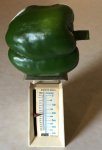- Joined
- Mar 27, 2012
- Messages
- 4,180
- Reaction score
- 2,716
- Hardiness Zone
- 9a
- Country

One of the most common issues that people have with plants is over-watering. Please take a moment to read through this post - you might be surprised. Over-watering can be far more problematic than under-watering, but most people don't realise they are doing it.
Signs of over-watering:
Why is over-watering a problem? Plants take in oxygen through the roots as well as water and nutrients, and if there is too much water they literally drown.
Here's how to water:
Don't forget that all plants are different, so use your judgement - feel the soil, look at the plant, and follow the above tips.
Signs of over-watering:
- Drooping / wilting leaves
- Yellowing of leaves
- Leaf tips turn brown
- Loss of leaves
- No new growth
- Algae on soil surface
Why is over-watering a problem? Plants take in oxygen through the roots as well as water and nutrients, and if there is too much water they literally drown.
Here's how to water:
- Check the soil with your fingers before you water - if it feels wet / damp, you don't need to water.
- Water long and deep so that the water gets right down into the roots. Watering little and often is a bad idea - it is far better to water less frequently but deeply.
- The best time to water is early morning or late evening.
- Try not to get water on the leaves - wet leaves in the morning may get scorched by the sun, wet leaves at night create a nice environment for mould and fungal diseases.
- Make sure you have good drainage.
Don't forget that all plants are different, so use your judgement - feel the soil, look at the plant, and follow the above tips.







